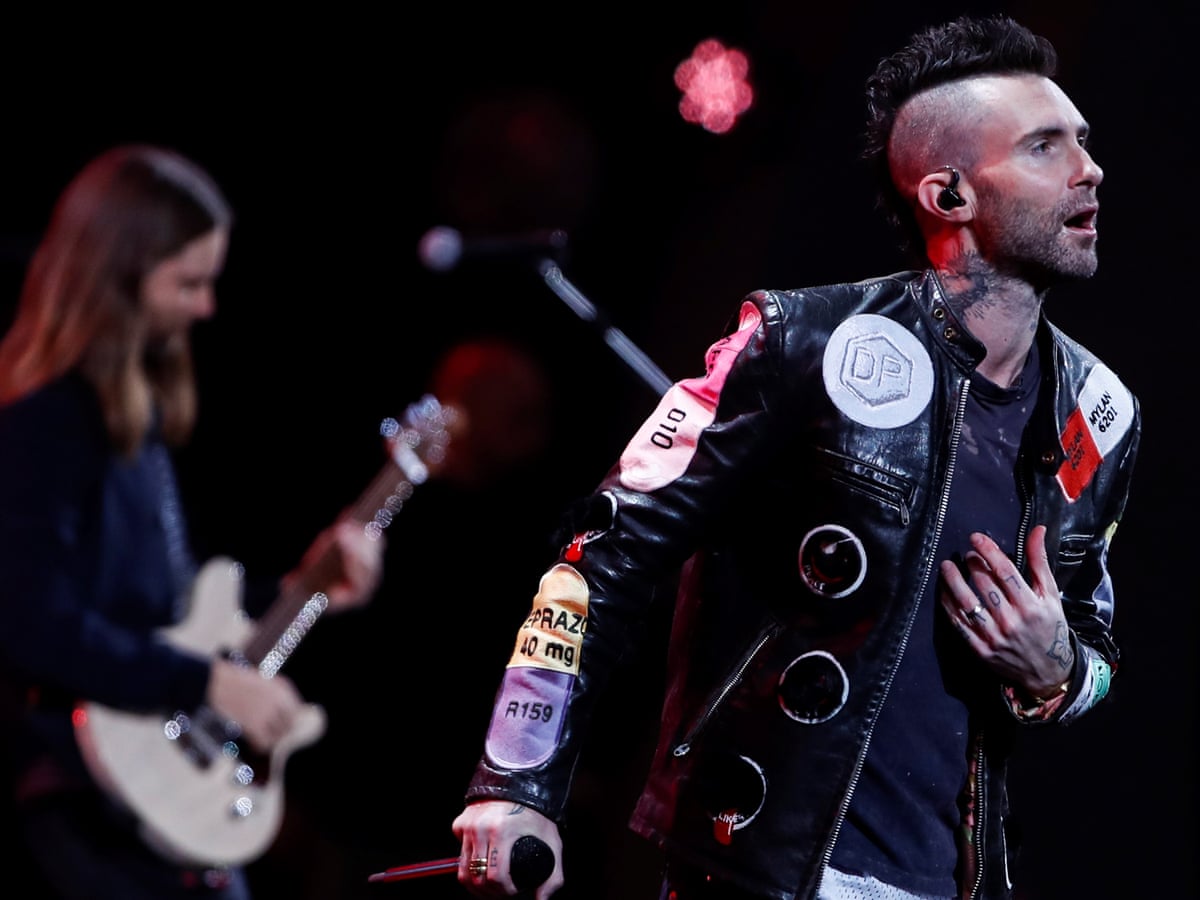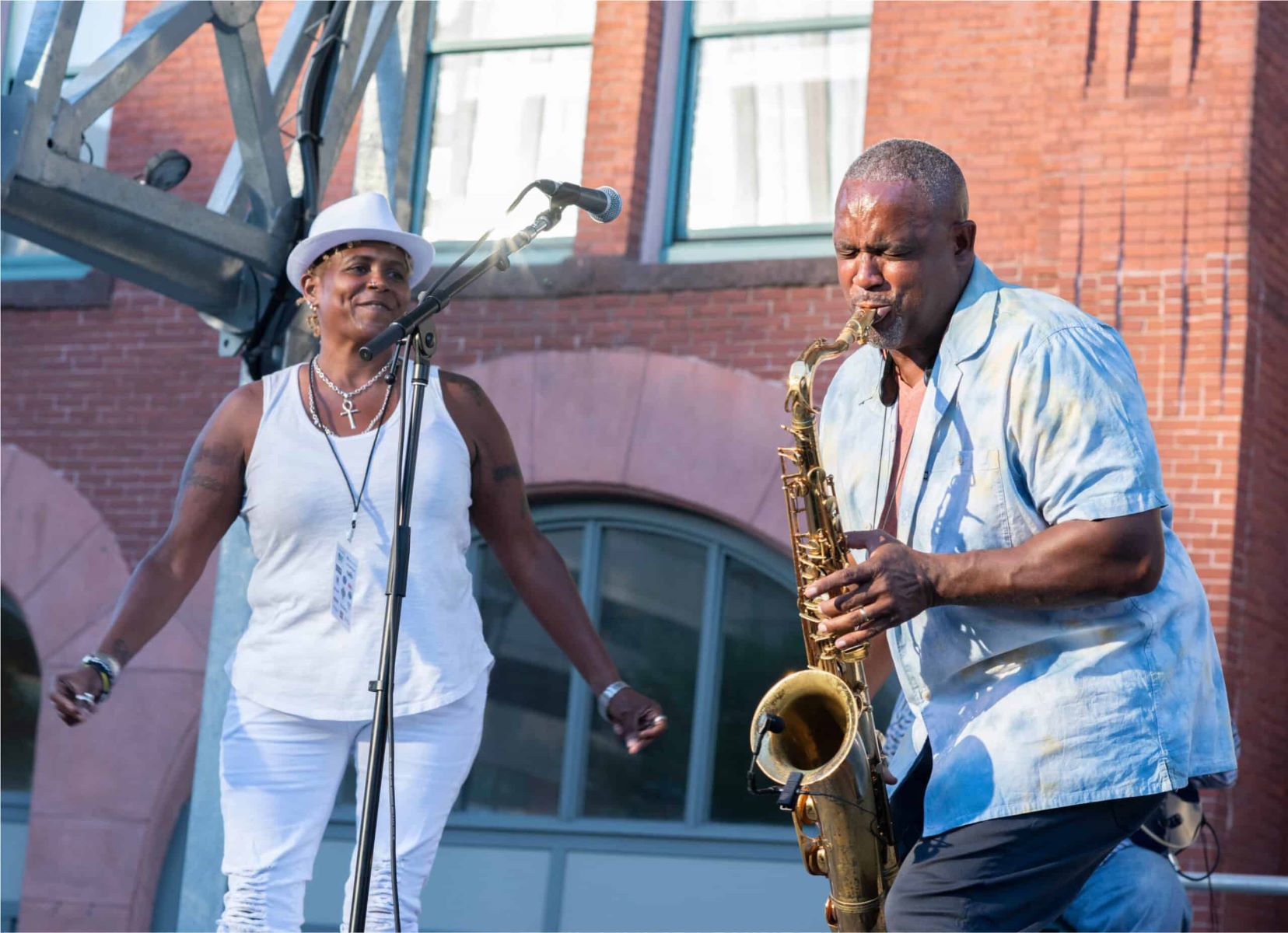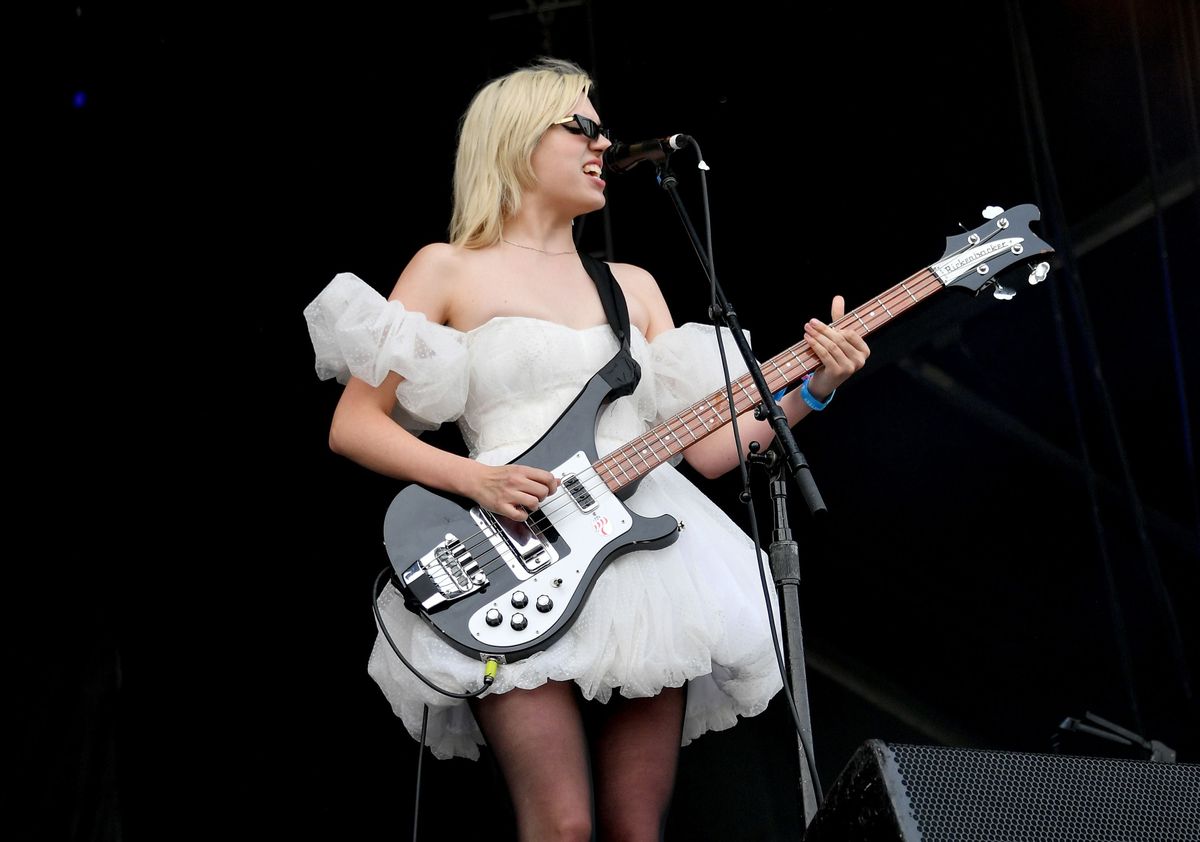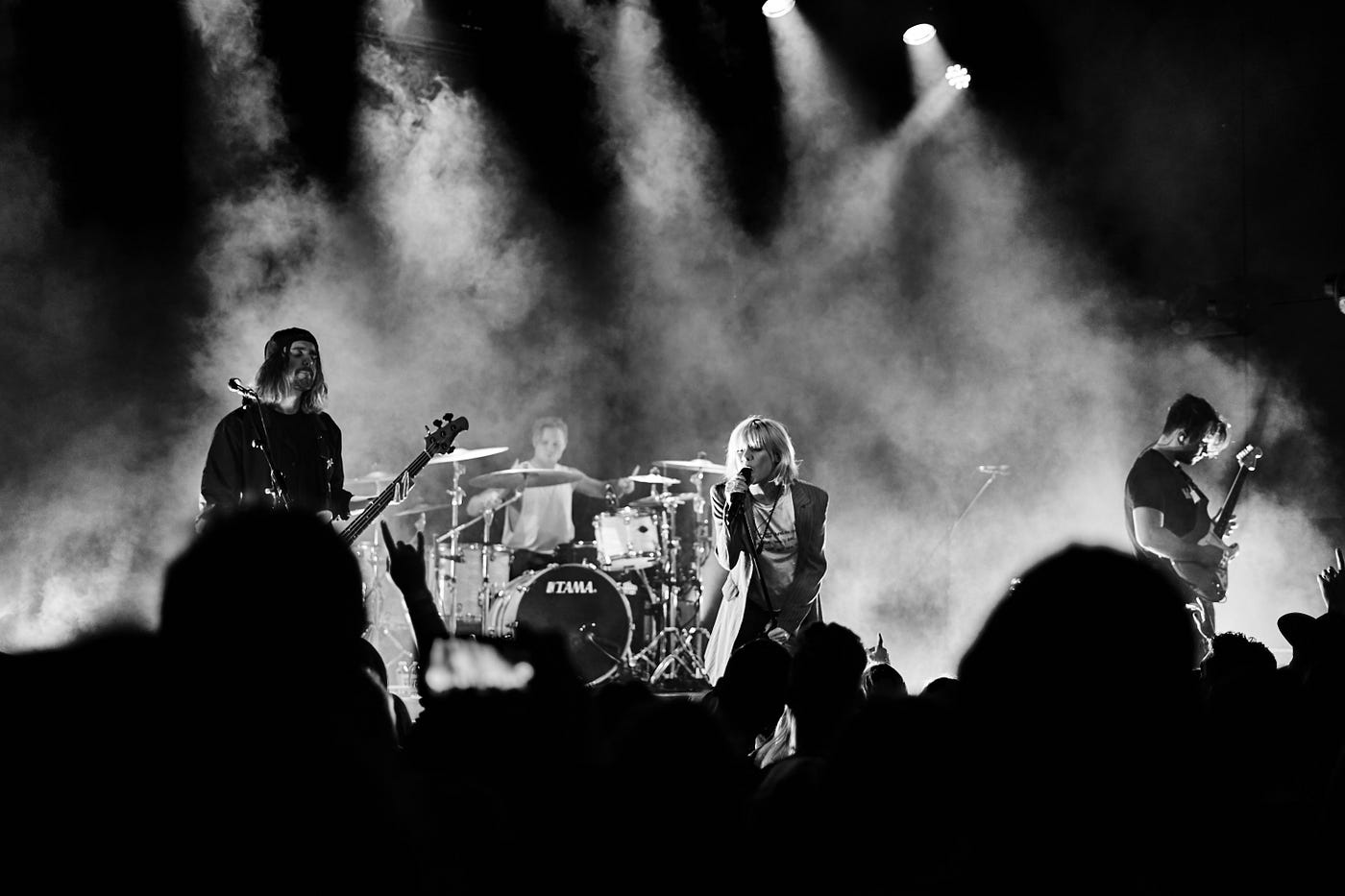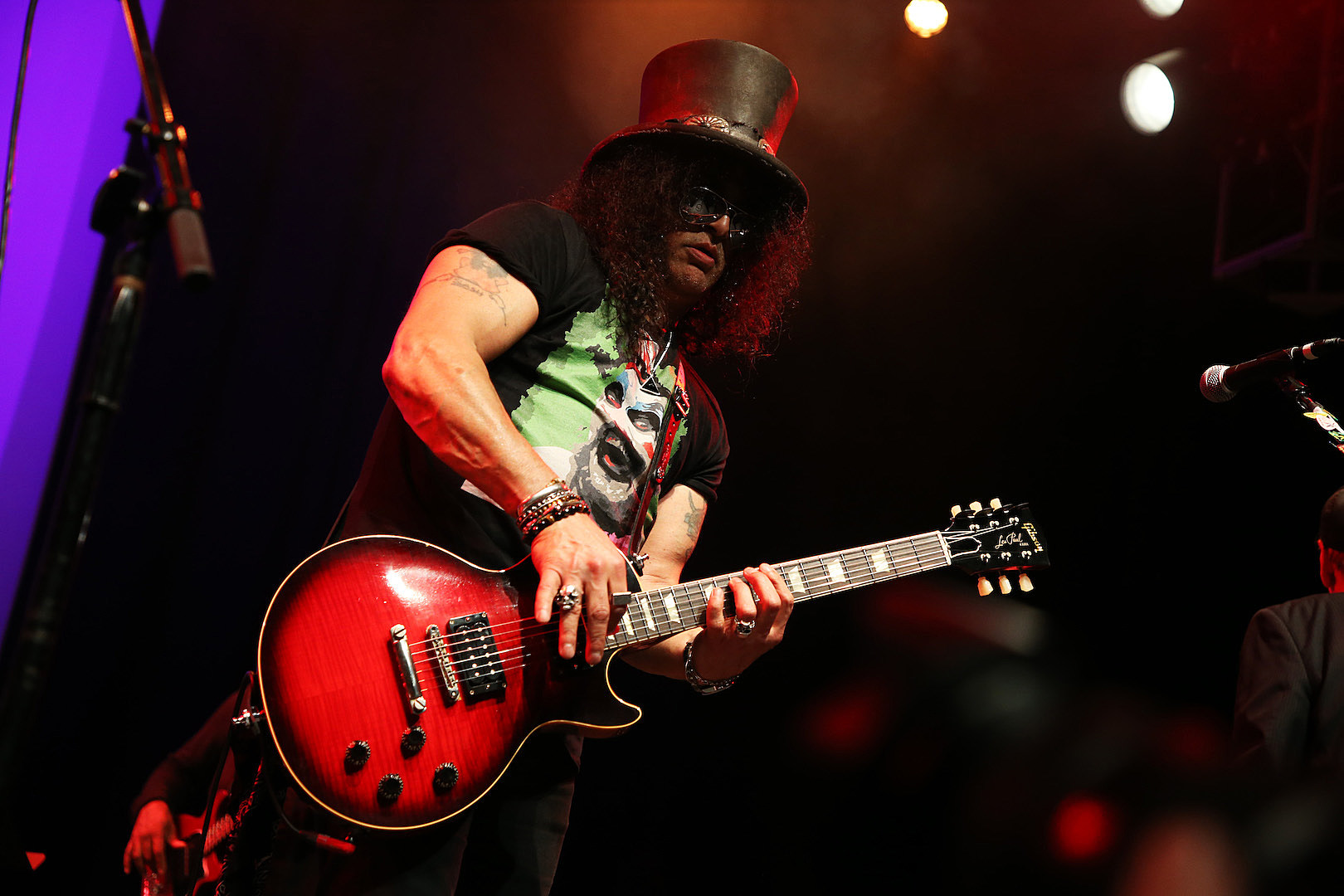Home>Genres>Rock>Why Was Rock Music Considered A Communist Plot?
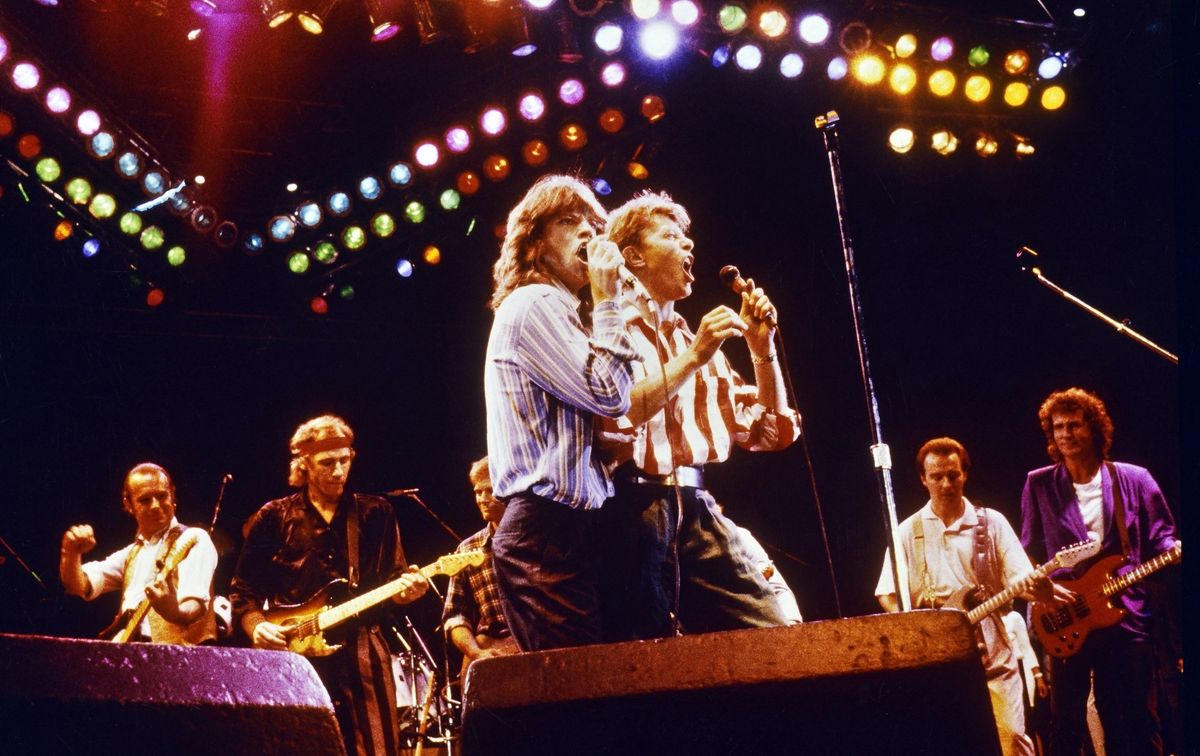

Rock
Why Was Rock Music Considered A Communist Plot?
Modified: January 22, 2024
Discover the surprising history behind why rock music was once feared as a communist plot. Uncover the political tensions and conspiracy theories surrounding this influential genre.
(Many of the links in this article redirect to a specific reviewed product. Your purchase of these products through affiliate links helps to generate commission for AudioLover.com, at no extra cost. Learn more)
Table of Contents
Introduction
Rock music has always been associated with rebellion, counterculture, and challenging societal norms. Its origins can be traced back to the late 1940s and early 1950s in the United States, when a fusion of various musical genres gave birth to this powerful and energetic genre. However, during the height of the Cold War and the era of McCarthyism, rock music found itself at the center of a conspiracy theory – it was perceived by some as a communist plot to undermine American society. This notion may seem bizarre today, but it highlights the profound impact that fear and paranoia can have on public perception.
To understand why rock music was considered a communist plot, it is essential to delve into the historical background of the time. The Red Scare, spearheaded by Senator Joseph McCarthy, gripped America with a fervor to identify and eliminate communist influences. The fear of communism permeated every aspect of society, from politics to entertainment. Music, being a powerful form of expression, became a target for suspicion and scrutiny.
Historical Background
To grasp why rock music became entangled in the communist conspiracy theory, it is crucial to understand the historical context in which it emerged. The post-World War II era was marked by the rise of the Cold War, a tense ideological battle between the United States and the Soviet Union. The fear of communism and the perceived threat it posed to American values fueled paranoia and led to the establishment of anti-communist movements.
One of the most notorious anti-communist movements was McCarthyism, named after Senator Joseph McCarthy. McCarthy claimed that there were communists infiltrating America’s government, entertainment industry, and even ordinary people’s lives. This era of intense suspicion and accusation spread across all facets of society, including the music industry.
During this time, the cultural landscape was also experiencing a significant shift. Young people were becoming more vocal, seeking new forms of expression, and challenging traditional values. It was in this environment that rock music emerged, combining elements of blues, rhythm and blues, and country music to create a new and distinctive sound.
Rock music resonated with the youth of the 1950s and 1960s, reflecting their desire for change and their discontent with the status quo. The rebellious nature of the music and its association with African-American artists made it particularly threatening to those who feared disruption to the existing social order. As a result, rock music became a prime target for those seeking to identify subversive influences and root out perceived communist sympathizers.
The Red Scare and McCarthyism
The Red Scare and McCarthyism were two intertwined phenomena that had a profound impact on American society during the 1950s and 1960s. The Red Scare refers to the widespread fear and paranoia regarding the infiltration of communists within the United States, while McCarthyism specifically refers to the tactics employed by Senator Joseph McCarthy in his quest to root out alleged communist influences.
Senator McCarthy became the face of the anti-communist movement, leveraging his position of power to accuse individuals of being communists or communist sympathizers without substantial evidence. McCarthy’s relentless pursuit of alleged communists and his aggressive style of interrogation, characterized by accusations and insinuations, struck fear into the hearts of many.
The entertainment industry, including the music scene, was not immune to McCarthyism. In fact, the McCarthy hearings targeted numerous artists, musicians, and performers, accusing them of promoting subversive ideologies through their work. This climate of fear and suspicion created a chilling effect, forcing many musicians to self-censor or face dire consequences.
The fear of being labeled a communist or having communist sympathies led to extensive blacklisting and ruined careers. The House Un-American Activities Committee (HUAC) conducted investigations into alleged communist influences in the entertainment industry, compelling witnesses to testify against their colleagues. The goal was to expose any possible communist propaganda or subversive messages disseminated through music, films, or other forms of popular culture.
While there were certainly some individuals with communist affiliations within the entertainment industry, the majority were targeted based on vague connections or hearsay. McCarthyism created an atmosphere of distrust and paranoia, and anyone associated with counterculture movements or exercising their freedom of speech was viewed with suspicion. Rock musicians, with their rebellious image and socially progressive lyrics, were often caught in the crosshairs of this witch hunt.
Perceived Influence of Rock Music
Rock music, with its energetic rhythms, powerful lyrics, and passionate performances, captured the hearts and minds of a generation. However, during the Red Scare and McCarthyism, it wasn’t just the rebellious nature of rock music that caused concern – it was the perceived influence it had on young people and its potential to sway them towards communist ideologies.
Rock music was seen as a vehicle for spreading subversive messages and inciting rebellion against societal norms. It was accused of promoting anti-establishment sentiments, questioning authority, and challenging traditional values. This made it a prime target for those who viewed it as a threat to American patriotism and capitalism.
Moreover, the racial origins of rock music added another layer of perceived danger. Many early rock musicians drew inspiration from African-American artists and incorporated elements of blues and rhythm and blues into their music. This interracial influence was seen as a threat to the segregationist mindset of the time, further fueling suspicions that rock music was being used to promote a communist agenda of racial equality.
The lyrics and themes of rock music also came under scrutiny. Songs that discussed social justice, civil rights, and anti-war sentiments were seen as fueling dissent and promoting a communist narrative. The rebellious nature of the lyrics, combined with the growing anti-establishment sentiments of the youth, led to accusations of subversion.
Additionally, the lifestyle associated with rock music – characterized by free-spiritedness, experimentation, and, in some cases, drug usage – further exacerbated fears among those who equated these behaviors with a rejection of American values and a cultivation of a communist mindset.
It is important to note that the perceived influence of rock music was largely based on exaggeration and misunderstandings. The power of music to connect with listeners emotionally and inspire change was interpreted by some as a dangerous tool being manipulated by communist forces. This fear and paranoia surrounding rock music became deeply ingrained within the collective consciousness of the era, despite lacking substantial evidence to support these claims.
Rock Music as a Symbol of Rebellion
One of the primary reasons rock music was considered a communist plot was its status as a symbol of rebellion. In the post-World War II era, the youth were seeking an outlet to express their dissatisfaction with societal norms and cultural constraints. Rock music emerged as a powerful force, encapsulating the spirit of rebellion and giving a voice to the disenfranchised.
Rock music not only challenged the status quo but also questioned authority and traditional values. It celebrated freedom, individuality, and nonconformity. The energetic and raw nature of the music, combined with its lyrical themes of love, longing, and social commentary, resonated deeply with young people who were eager to break free from the constraints of their time.
The rebelliousness of rock music was seen as a threat to the conservative values of the era. It was perceived as a catalyst for social change and a vehicle for promoting radical ideologies. The narrative surrounding the genre was amplified by media outlets, often portraying rock musicians as divisive figures who were corrupting the minds of the youth.
Rock musicians became cultural icons and leaders of a new counterculture movement. Their long hair, leather jackets, and attitude of defiance embodied the spirit of rebellion. This image, combined with the music’s infectious energy, created a sense of unity among those who felt marginalized or oppressed by the prevailing social order.
Furthermore, rock music provided an avenue for expressing dissatisfaction with the political climate and the ongoing Vietnam War. Songs like Bob Dylan’s “Blowin’ in the Wind” and Buffalo Springfield’s “For What It’s Worth” became anthems of protest and resistance, resonating with a generation of young people who were disillusioned by the government’s actions.
While rock music’s rebellious nature was genuine, it was misconstrued by some as a deliberate effort to undermine American values and promote communism. The association of rock music with rebellion and counterculture movements made it an easy target for those seeking scapegoats in their fight against perceived subversion.
Ultimately, rock music’s status as a symbol of rebellion, while genuine, should not be conflated with a deliberate communist plot. It was a natural response to a changing cultural landscape and an expression of the desire for individuality, freedom, and social change. The fact that it coincided with the Red Scare and McCarthyism only intensified the suspicions and accusations that were levied against it.
Criticisms and Accusations
During the Red Scare and McCarthyism, rock music faced numerous criticisms and accusations, often based on misguided beliefs and the prevailing paranoia of the era. These allegations ranged from claims of promoting communist propaganda to accusations of corrupting the youth and inciting rebellion against established authority.
One of the main criticisms leveled against rock music was its alleged promotion of promiscuity and immorality. Critics argued that the lyrics and suggestive performances of rock musicians were designed to undermine traditional values and family structures. This moral outrage was often conflated with communist ideologies, with claims that rock music aimed to disrupt the fabric of American society.
Rock music’s association with African-American influences also drew criticism. Some accused rock musicians of appropriating black culture for personal gain and perpetuating racial tensions. This accusation ignored the genuine influence and appreciation that many rock musicians had for African-American artists and failed to recognize the role of music in fostering cross-cultural understanding.
Additionally, the counterculture movement that embraced rock music was often vilified as anti-American and subversive. Those involved in the movement were accused of promoting communist ideas of equality and social justice, which some believed threatened the capitalist foundations of the United States. The anti-establishment sentiment within the counterculture movement was seen as a direct challenge to the government and its policies, leading to further accusations of communist sympathies.
Furthermore, some critics argued that the loud and rebellious nature of rock music had a detrimental effect on the mental and emotional well-being of young listeners. They claimed that the music’s energetic rhythms and provocative lyrics promoted aggression and lawlessness, ultimately leading to a breakdown of societal order. This criticism ignored the fact that rock music provided an outlet for expression and a sense of belonging to those who felt alienated or oppressed.
While these criticisms and accusations were not grounded in reality, they had a lasting impact on the perception of rock music during this tumultuous period. The Red Scare and McCarthyism created an environment of fear and suspicion, where any form of dissent or deviation from the norm was deeply scrutinized. Rock music, with its rebellious nature and growing popularity among the youth, became an easy target for those seeking to maintain control and eradicate perceived threats to American values.
The Role of Communist Propaganda
One of the key accusations leveled against rock music during the Red Scare and McCarthyism was its alleged role in promoting communist propaganda. The belief was that rock musicians and their lyrics were being used as tools by communist forces to undermine American society and advance their agenda.
This accusation was fueled by the association of rock music with counterculture movements, which were often seen as promoting socialist or communist ideals of equality and social justice. Critics argued that the subversive messages embedded in rock lyrics were carefully crafted to sway the minds of young listeners and turn them against the values of democracy and capitalism.
However, it is important to note that while some individual musicians may have held left-leaning political beliefs, there is no substantial evidence to suggest that rock music as a whole was part of a coordinated communist plot. Many rock musicians were simply advocating for social change and expressing the frustrations and aspirations of their generation.
Furthermore, rock music’s connection to African-American influences was also misconstrued as part of a communist propaganda effort. Critics argued that the integration of African-American culture into rock music was an attempt to sow racial division and stir up unrest. In reality, rock music drew inspiration from a wide range of musical traditions, including blues, gospel, and jazz, without any intentional political motives.
It is also worth mentioning that communist propaganda during the Cold War era often took a different form, focusing on dissemination through traditional media channels, political literature, and educational institutions. While music played a role in broader cultural movements, it was largely seen as a reflection of society rather than a deliberate vehicle for communist ideology.
Ultimately, the perception of rock music as a tool of communist propaganda was a result of the heightened fear and paranoia of the time. The Red Scare and McCarthyism amplified suspicions and accusations, leading to an environment where any form of dissent or deviance was viewed through the lens of communist infiltration. While rock music may have questioned societal norms and advocated for change, it was not part of an orchestrated communist plot.
Cold War Paranoia and Fear Factors
The intense Cold War tensions between the United States and the Soviet Union cast a long shadow over American society during the Red Scare and McCarthyism. The fear of communism infiltrating all aspects of American life created an atmosphere of paranoia and suspicion. This climate of fear played a significant role in why rock music, with its rebellious nature and countercultural associations, was considered a communist plot.
The perceived threat of communism led to a heightened sense of vigilance and an eagerness to identify and eradicate any potential subversive influences. McCarthyism, with its accusatory hearings and aggressive tactics, intensified the climate of fear. People were encouraged to report on one another, leading to a culture of suspicion and betrayal.
The Red Scare and McCarthyism exploited public anxiety and contributed to a prevailing atmosphere of fear. This fear was not limited to politicians and government officials but permeated all aspects of society. Families feared that their loved ones could be communists, neighbors watched each other with suspicion, and any form of dissent or deviation from the perceived norm was considered suspect.
Rock music, with its association with rebellion, counterculture, and a desire for social change, easily became a target in this climate of fear. The genre’s growing popularity among young people, who were often at the forefront of challenging societal norms, only intensified the concerns of those who felt threatened by perceived subversive influences.
Furthermore, the anti-establishment sentiment embodied in the counterculture movement and its alignment with the principles of equality and social justice further stoked fears of communist infiltration. The idea that rock music had the potential to unite people against the government and the prevailing capitalist system heightened anxieties and lent credence to the belief that it was part of a wider communist plot.
The fear factors present during this time skewed the perception of rock music and led to unfounded accusations and suspicions. The combination of political tensions, societal shifts, and a desire to maintain control created an environment where anything perceived as a deviation from established norms was viewed through the lens of communist infiltration.
In retrospect, the fears and paranoia surrounding rock music during the Red Scare and McCarthyism highlight the profound impact that fear can have on public perception. Rock music, with its powerful influence and ability to connect with listeners on an emotional level, became a convenient target in the search for hidden communist elements. However, it is crucial to view this era through a lens of historical context and recognize that the perceived communist plot associated with rock music was largely a product of Cold War paranoia and fear.
Conclusion
The notion that rock music was a communist plot during the Red Scare and McCarthyism was a product of fear, paranoia, and the prevailing political climate of the time. The intense Cold War tensions and the fear of communist infiltration created an environment where anything perceived as subversive or countercultural was viewed with suspicion.
Rock music, with its rebellious nature, association with African-American influences, and connection to the counterculture movement, became a prime target of accusations and criticisms. It was accused of promoting communist propaganda, inciting rebellion, and undermining traditional values. However, these allegations were largely unfounded and based on misunderstandings.
While rock music did challenge societal norms and advocate for social change, it was not part of a deliberate communist plot. Rather, it was a reflection of the changing times and the desires of a generation seeking freedom, expression, and a voice to challenge the establishment.
The Red Scare and McCarthyism created an atmosphere of fear, where any form of dissent was viewed through the lens of communist infiltration. The fear factors present during this time distorted perceptions and led to the unjust labeling of rock music as a threat to American values.
In retrospect, the accusations against rock music during this era were largely misguided, exaggerated, and driven by the prevailing political climate. It is essential to consider the historical context and recognize that the perception of rock music as a communist plot was a result of exaggerated fears and paranoia.
Rock music has since become a permanent fixture in popular culture, celebrated for its impact, creativity, and ability to give voice to marginalized communities. The fears and suspicions of the past have faded, giving way to a more nuanced understanding of the genre’s cultural significance.
As we reflect on this chapter in history, it serves as a reminder of how fear and paranoia can cloud judgment and lead to unjust accusations. It is a testament to the power of music and the human desire for self-expression and change. Rock music, once considered a communist plot, has endured and continues to shape the cultural landscape, transcending the misconceptions and prejudices of its earlier years.

